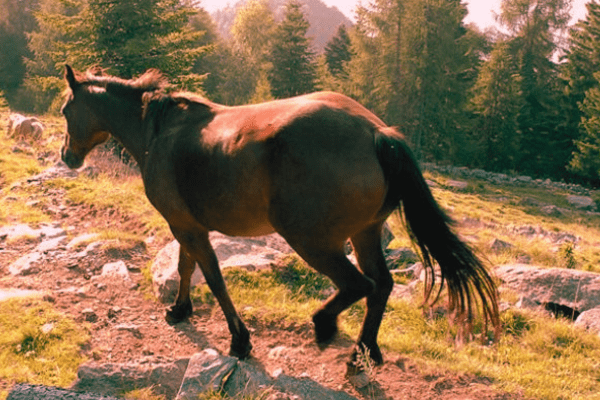The Samolaco Horse, indigenous to the Lombardy region of northern Italy, is a breed on the brink of extinction. Originating from the valleys of Valchiavenna and Valtellina and named after the town of Samolaco near Chiavenna, this breed has not been officially recognized by the Italian breeders’ association (AIA) and faces significant conservation challenges.
History & Origin:
The Samolaco horse, a breed with historical ties to the seventeenth century, is believed to have evolved through the merging of local equines and Spanish horses left by the retreating Spanish forces in strategic areas like Trivio di Fuentes and Pian di Spagna after 1706. The Food and Agriculture Organization (FAO) recognizes the breed as a blend of Andalusian genetics and native stock. Traditionally, these horses were seasonally managed—sheltered in the winter and sent to alpine pastures in summer. In their native region, the robust Bruna Alpina oxen were preferred for labor, limiting the Samolaco’s use and distribution.
Historical scholarship suggests that the Samolaco horse breed, whose lineage may trace back to equines abandoned during 17th-century invasions, encapsulates a narrative of survival and resilience. This breed, emerging from the harsh yet beautiful landscapes of Northern Italy’s Lombardy region, has withstood the trials of hunger, fatigue, and severe climatic adversity.
Although rare and teetering on the edge of endangerment, the Samolaco horses have carved their existence primarily within the confines of their native Italian territories. With the establishment of the Associazione Italiana Allevatori (Italian Breeders Association) on August 20, 1944, a concerted effort was made to recover national livestock populations that had plummeted post-World War II. Despite this, the Samolaco breed was not acknowledged as one of the fifteen indigenous breeds requiring conservation efforts.
The nomenclature of the breed is tied to the agricultural town of Samolaco in the Sondrio district. Artistic renditions from the period imply a lineage connected to the noble Andalusian horses, which are believed to have laid the genetic groundwork for the Samolaco breed. Yet, in their heyday, Samolaco horses were seldom used, as the robust Bruna Alpina oxen fulfilled most of the labor-intensive roles in forestry and agriculture, thus diminishing the demand for equine strength.
By the twilight of the 20th century, the Samolaco breed found itself in a precarious state, with some animals exhibiting significant conformational flaws. The economics of horse meat production did not favor their proliferation either, relegating these horses to seasonal pastures in the alpine highlands and confining them to stables only through the winter months. This cycle of seasonal use contributed to the decline in active breeding and, eventually, to the breed’s neglect.
A turning point arrived in the 1980s when efforts to preserve the few remaining Samolaco horses introduced Avelignese genetics, aiming to bolster the breed. What began as an improvement program gradually shifted towards genetic substitution. As a result, the pure Samolaco traits dwindled, leaving the horses with larger, heavier heads and structurally weak legs.
Today, the Samolaco horse stands as a testament to Italy’s equestrian history—a history that demands recognition and stewardship to restore the breed not only to its former physical glory but also to its rightful place in the agricultural and cultural tapestry of Italy.

